Ordered by my daughter at a Japanese restaurant
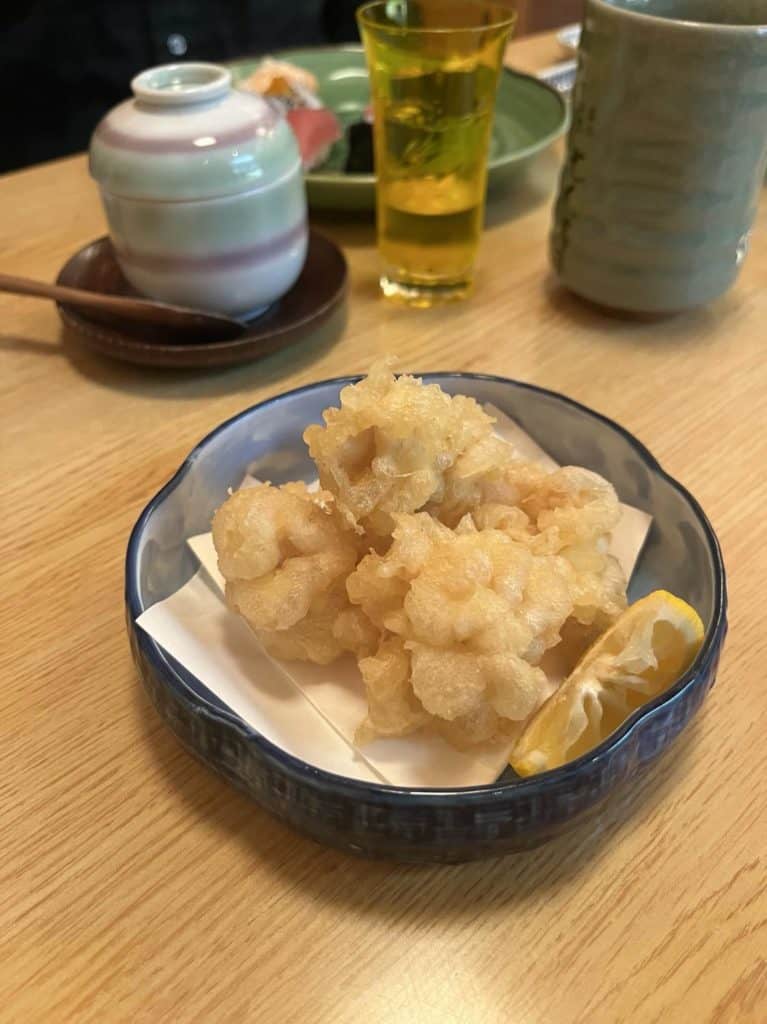
I realize that “strangest food” is subjective, so some of these may not be so strange to you. Nevertheless, allow me to share a few of my stand-outs.
A couple of years ago, I wrote that a rural Japanese innkeeper had served me the most exotic food I have ever eaten. That was true, but life and meals moved on, and now it’s time for an update.
Whale
In my other article, I neglected to mention whale. Yes, I have eaten whale both raw and cooked. It was even served to my children in their school lunches once a year.
School lunches are considered a part of the children’s education. There is an emphasis on eating a variety of foods with a balanced nutritional content. Once a year or so, they serve traditional foods to continue awareness. Whale was one of those.
Anyway, whale is easy to find at fish markets. Some cuts are intended to be eaten raw and others to be cooked, its fat is used to create an umami-filled broth, and even its intestines are sliced and eaten — see the circular items pictured below. Nothing goes to waste.
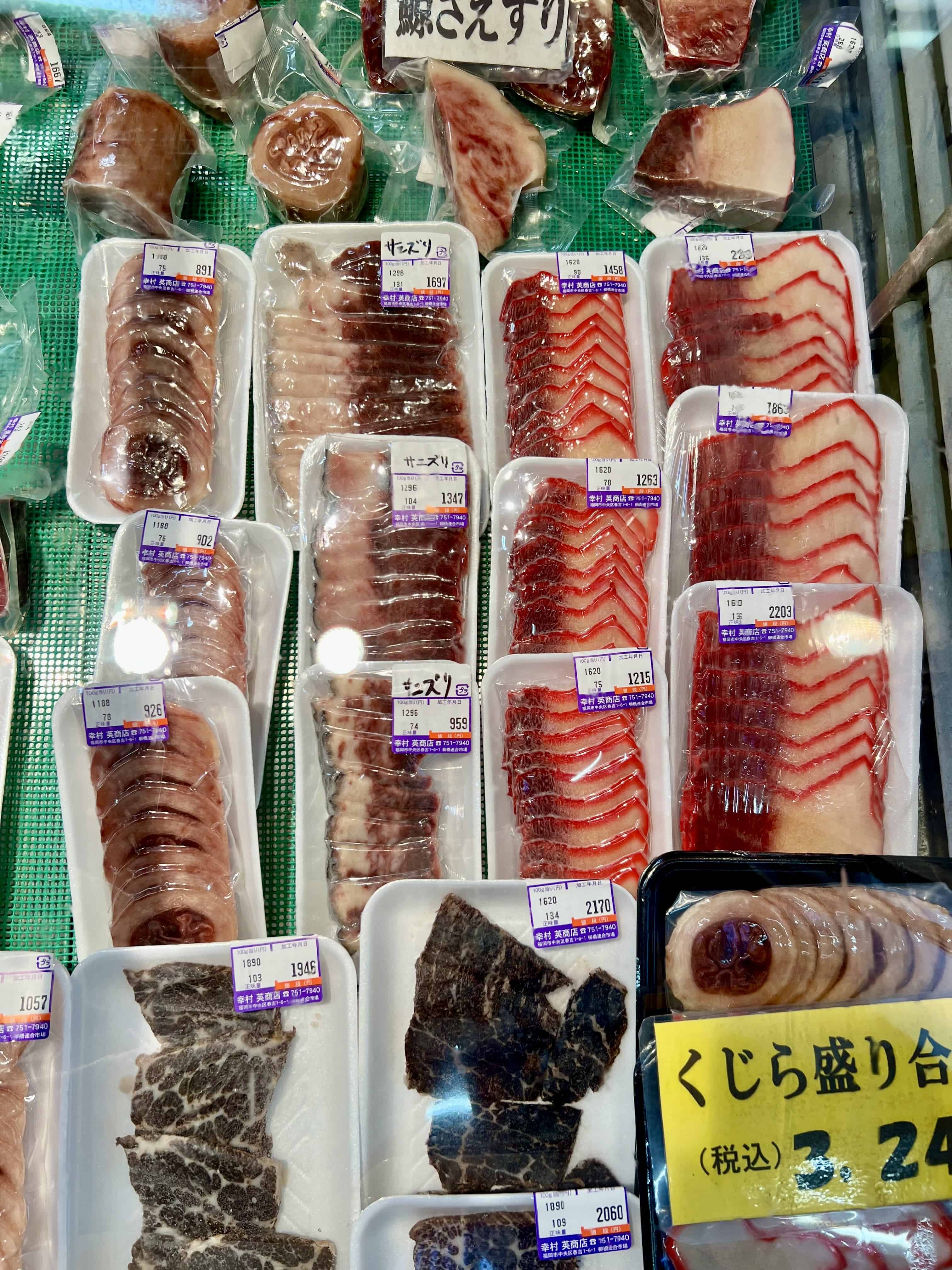
Speaking of whale, my daughter was gifted rice crackers, some flavored with whale, some with octopus, and some with blowfish—another delicacy in Japan that I’ve eaten both cooked and raw.
But still, these foods are not that strange, nor is my next offering.
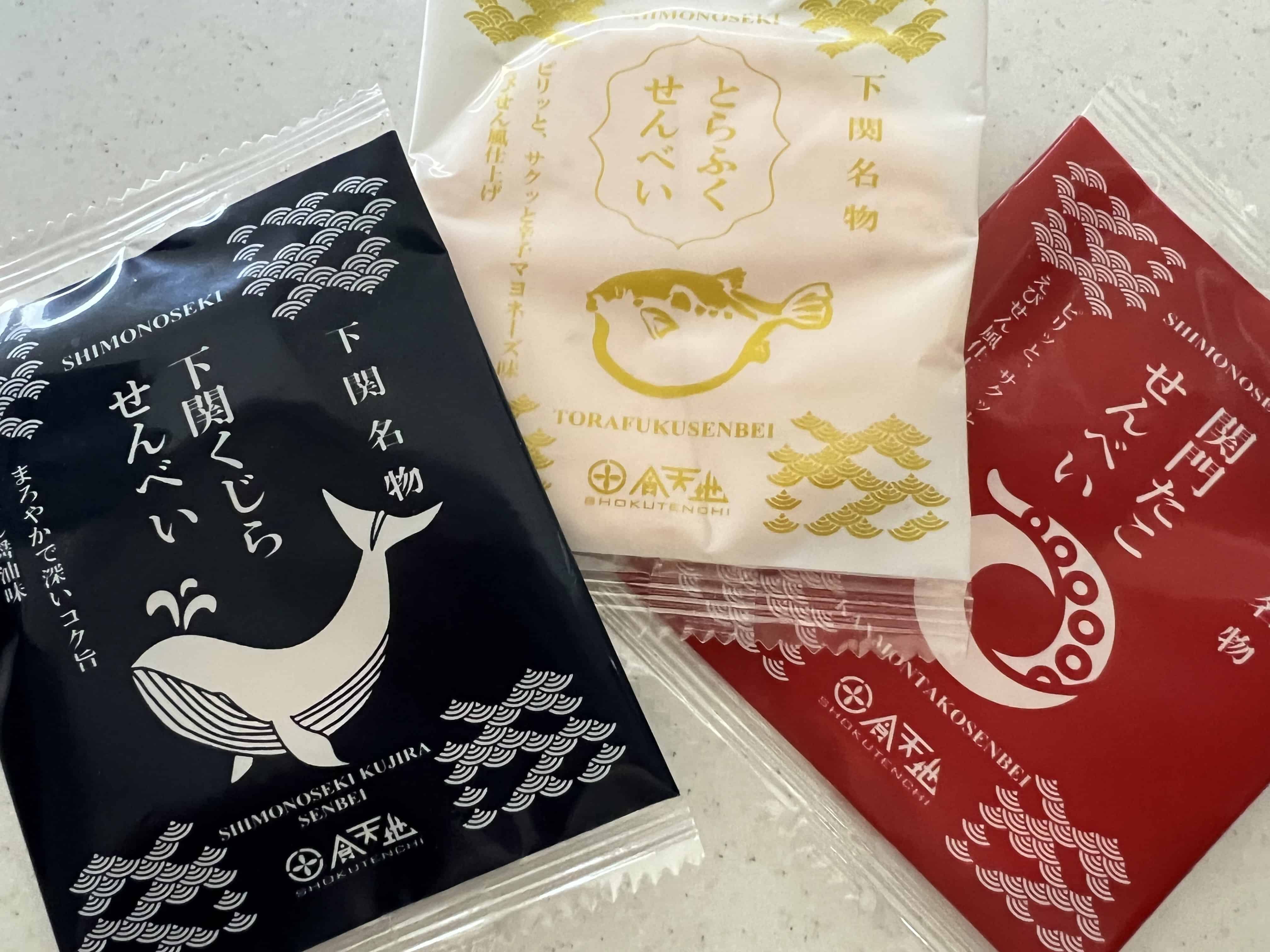
Yuba
If you have visited Kyoto, perhaps you’ve had macha (green tea) noodles with yuba.
Yuba is a food that developed as part of shojin-ryori, Buddhist vegetarian cuisine. It is the film that forms when soy milk is boiled. It’s gently lifted off and used in many creative ways. Its subtle flavor makes it versatile, and it’s hard to miss if you’re in Kyoto, Nikkō, or Mount Kōya.
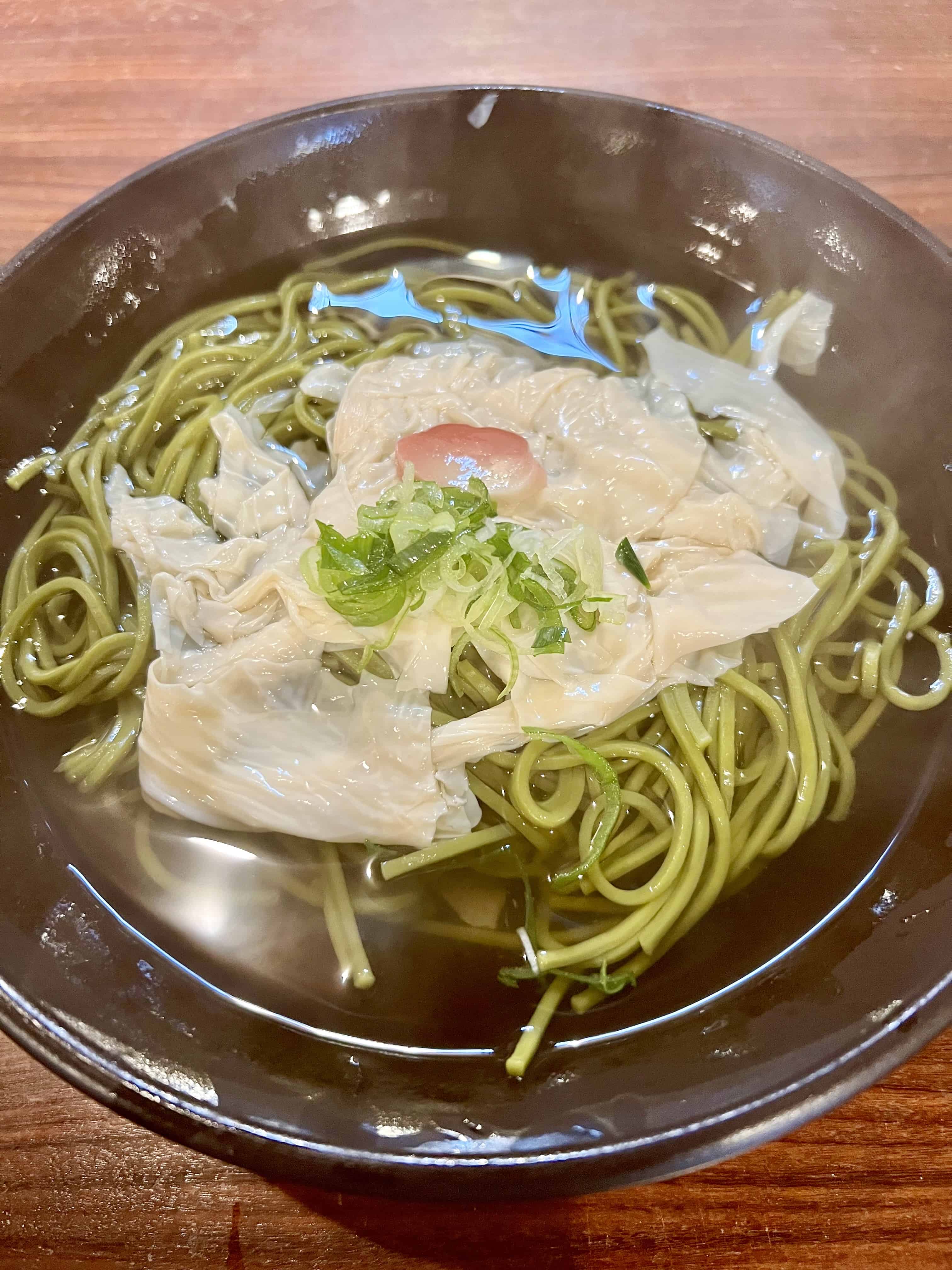
Fermented mackerel
Now we start to veer into the exotic with fermented mackerel, called heshiko. Its production is limited to a small village in Fukui Prefecture. Heshiko is centuries old, developed to be sent on the backs of porters to Kyoto and Nara.
Mackerel caught in Wakasa Bay is cleaned, then packed in salt and rice bran and left to ferment for six months or more.
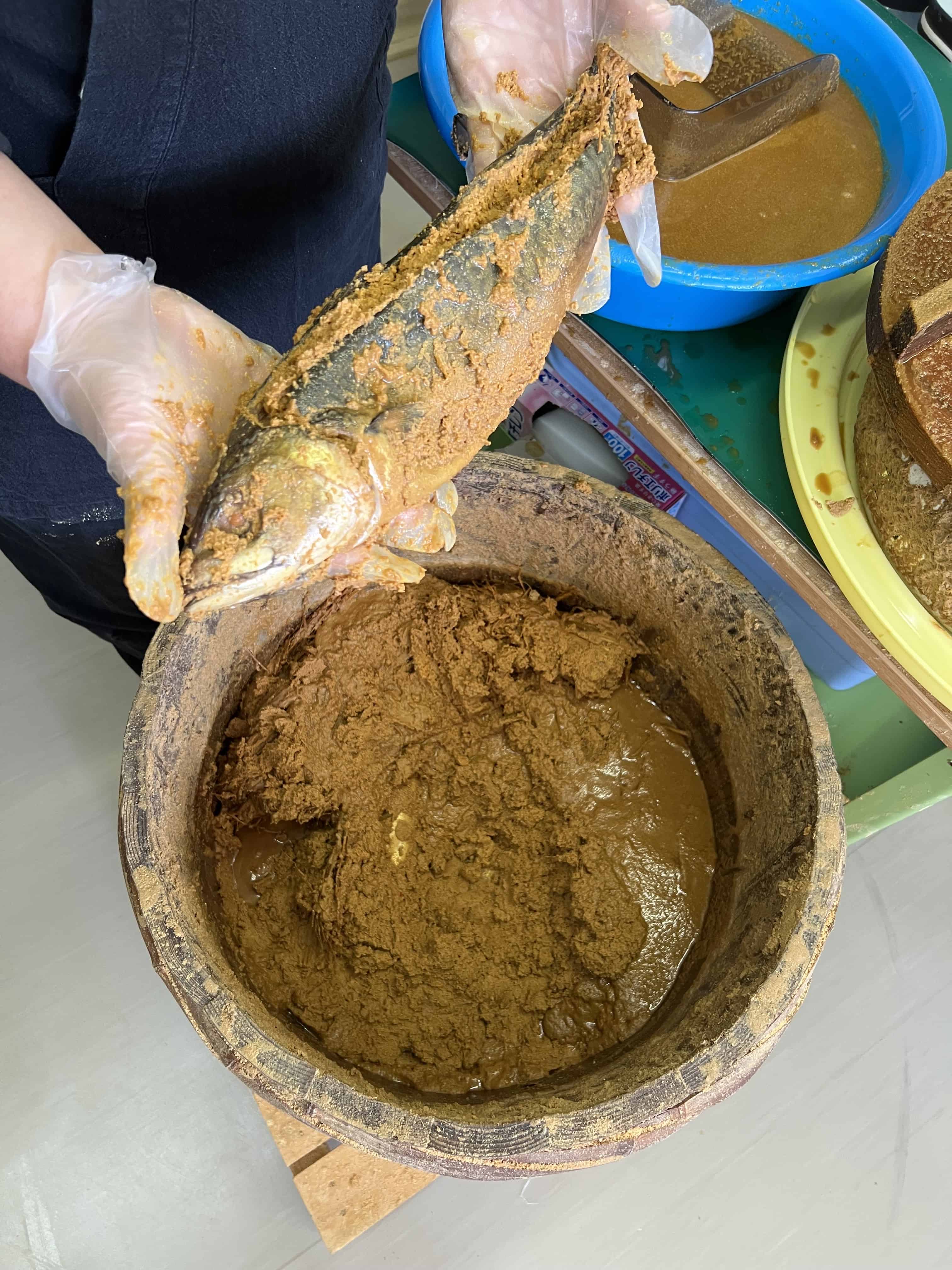
Heshiko is so interesting it deserves its own article. More on that later.
Monkfish liver
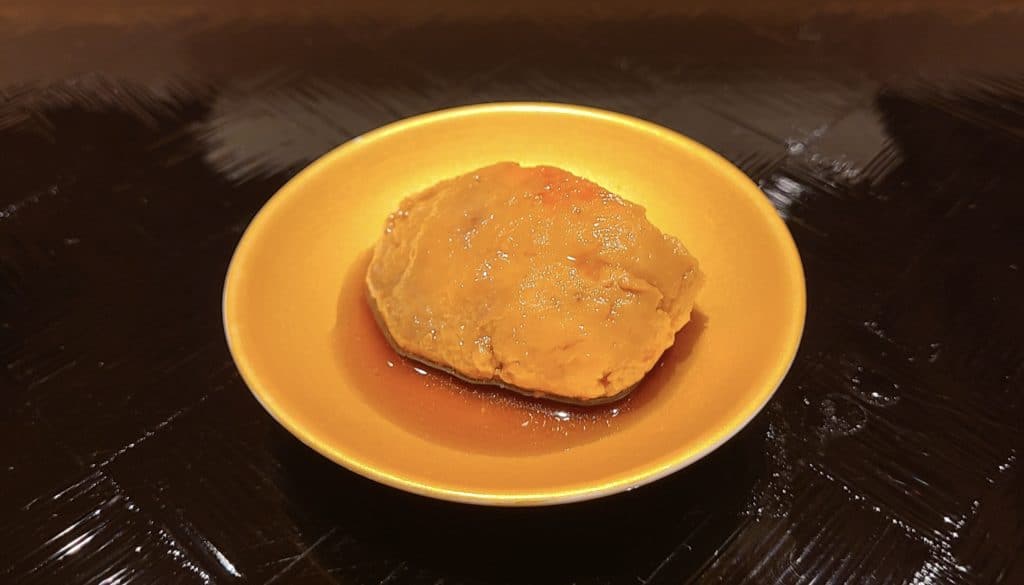
Monkfish are odd-looking creatures. I did not know that one could eat their livers, but having done so, I do now.
Tasty, but not something I would go out of my way to seek out.
Wasabi ice cream
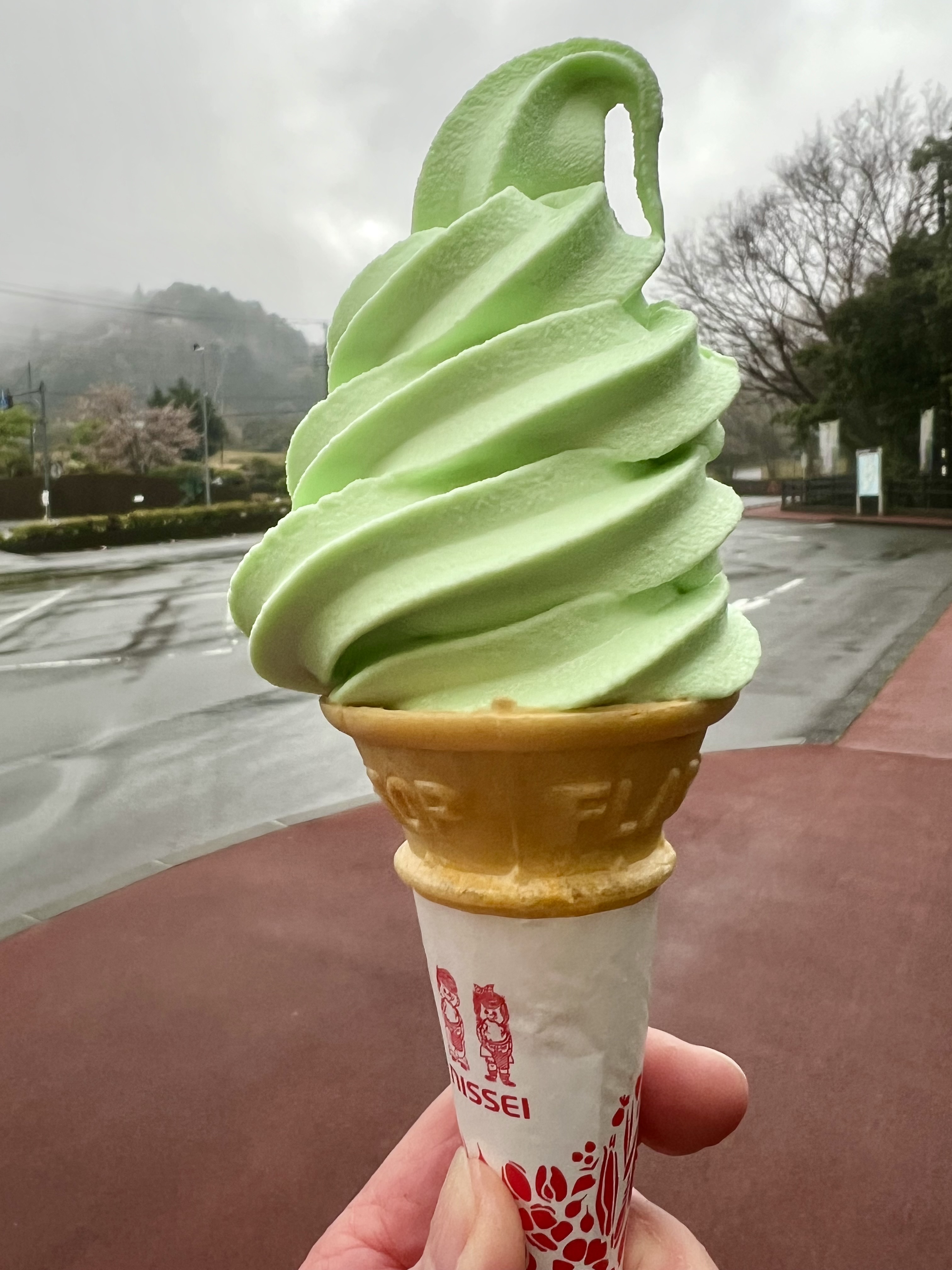
We usually think of wasabi as a condiment for sushi, sashimi, or soba, but it can be used for other things, too, like ice cream. But it must be fresh, which is completely different than the imitation wasabi made from horseradish that is sold in tubes in supermarkets.
I have had it a few times, and it’s both mildly hot and sweet. Try it, if you get a chance.
Now on to the winner of this article’s strangest food.
The strangest food
This exotic food appeared on my stage last month.
It all started when my eldest son decided to fly across the globe to visit his mother in rural Japan. One whim led to another, and one day my son, one of my daughters who was also visiting, and I, found ourselves exploring a shrine to none other than Ninigi-no-Mikoto, the grandson of the Sun Goddess, Amaterasu Omikami, from whom all Japanese emperors descended.
Japanese shrines are usually at the top of long staircases, and this was no exception. We were starting to feel a bit peckish.
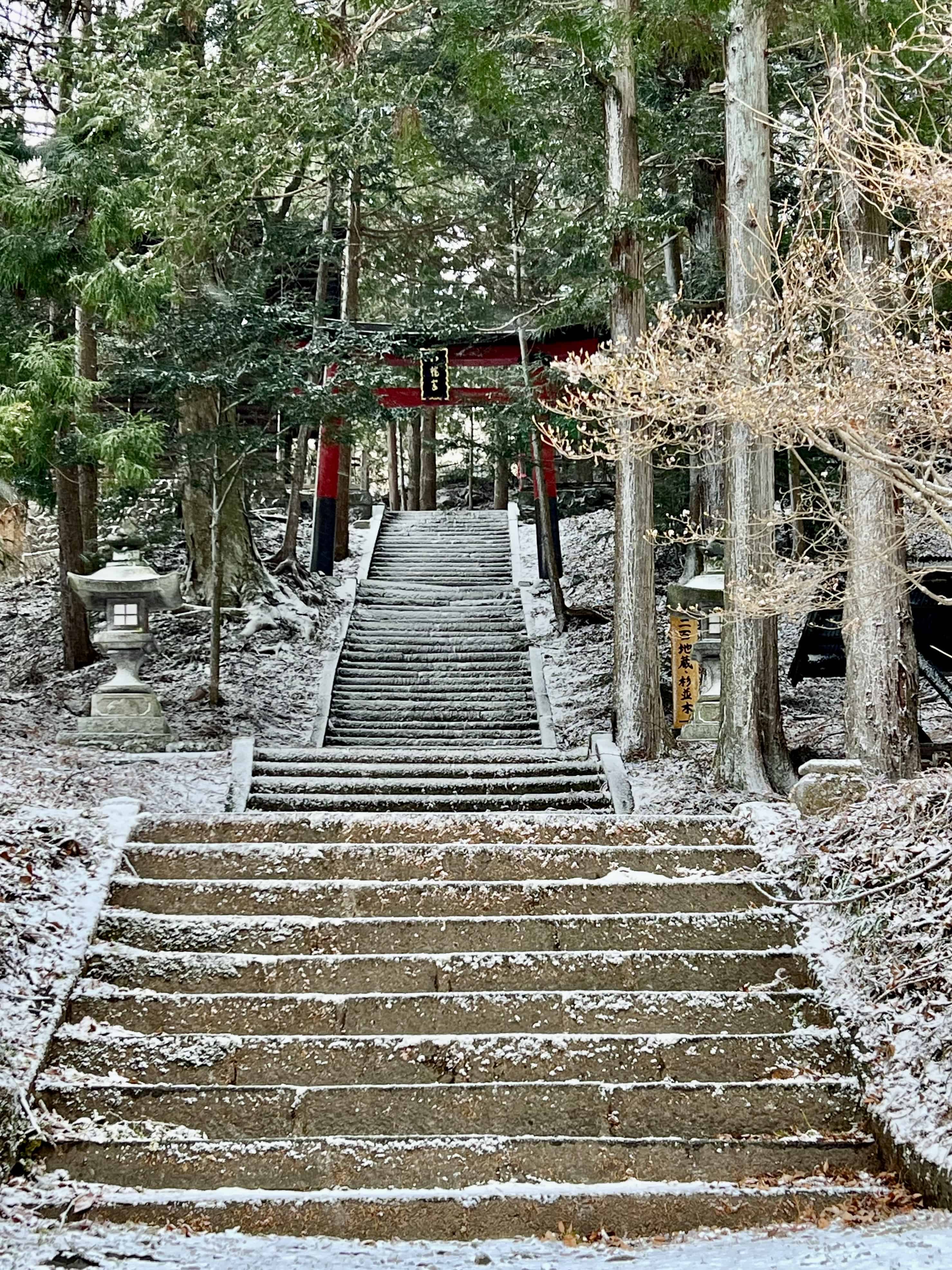
Google Maps led us to a nearby restaurant. It was closed. A very eager-to-help woman in the parking lot drew us a map to a chain sushi restaurant, but on the way, I wanted to check out a small one.
It looked good. Old. Traditional building. We went in.
Gold and uni
Oh, but wait! I completely forgot about gold leaf! I’ve eaten that numerous times.
And uni? Uni is sea urchin. But not all of the sea urchin — only the gonads are served in Japanese restaurants and called uni.
So there’s that, too. Sea urchin gonads.
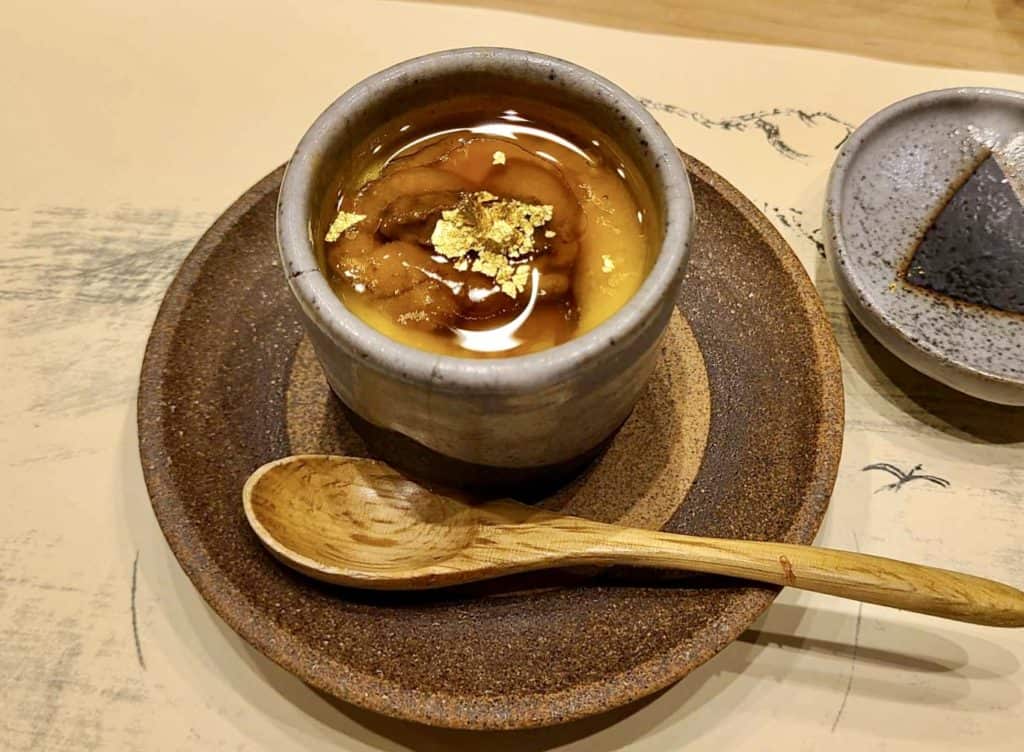
Back to the restaurant.
As we walked in, my daughter got all excited by one of the dishes listed in Japanese on the wall behind the counter.
“It’s seasonal, and they only make it this way in Kagoshima!” she enthused.
She ordered it. My son and I — not quite as “Japanese” as my red-haired and freckled daughter — didn’t pay much attention.
We ordered sushi sets, which were fresh and delicious and came with miso soup and chawan mushi, small cups of savory egg custard.
Then the dish my daughter ordered was served.
Tempura, my favorite!
It looked delicious. But what could it be?

Cod semen
It was fish semen tempura.
My daughter ate with gusto, and she was nice enough to share some with her brother and me.
I dare say, tempura is must be better than how it’s usually served.
Boiled, with ponzu—citrus soy sauce.
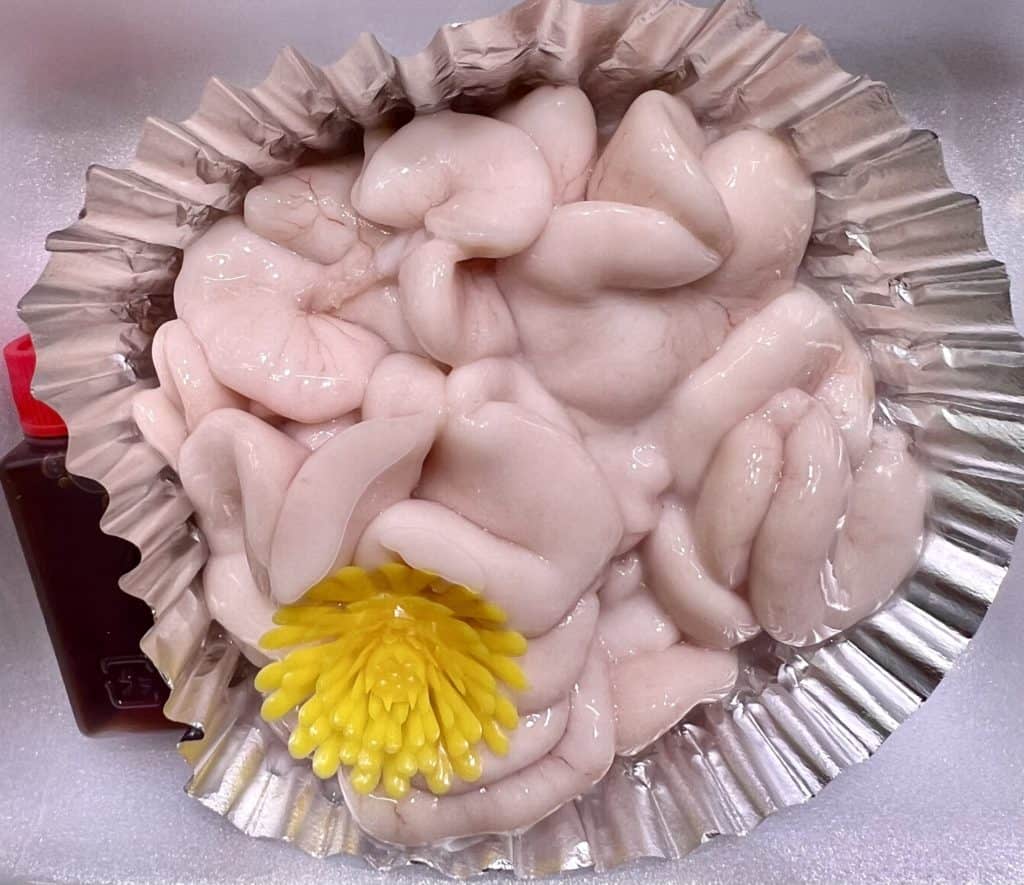
Yum.
What strange or exotic food have you eaten, that you actually liked?
If you have questions about Japan or suggestions for articles, please add them in the comments. For more photos and information on Japan, follow me on instagram at: https://www.instagram.com/more_than_tokyo/




